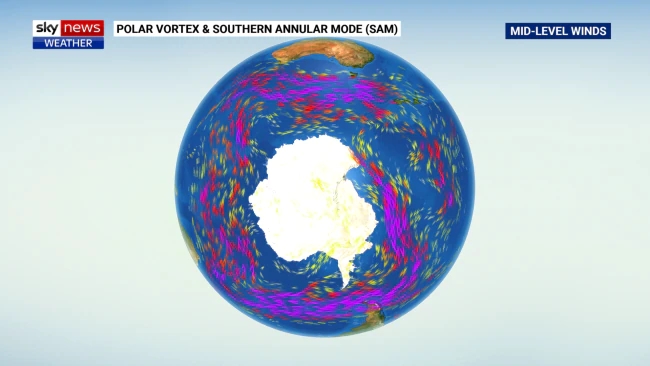Rob Sharpe that is, a Meteorologist working for Sky News Australia.
I say that because almost alone among his breed he made a forecast in October 2022 for lots of rain and flooding in Australia this summer, based on a non-weather event in early 2022.
How a Tongan volcanic eruption almost guarantees a ‘flooded summer’ for Australia’s east coast
Ok, so he does add the usual scientific hedging of “almost”, but it’s the explanation he gives that is as impressive as the forecast itself. You can read the detail at the link but after some discussion about the normal waxing of La Niña he gets to the meat of what the volcanic explosion would do, which basically it goes like this:
- The eruption put 20% more water vapour into the stratosphere than normal and that stayed in the Southern Hemisphere (SH) in the same way the lower altitude ash did.
- The water vapour has cooled the SH stratosphere, by reflecting more sunlight back out into space, and reflecting Earth’s radiation back to the ground.
- That, in turn, has cooled Antarctica.
- Which has pulled the Polar vortex, including the Southern Annular Mode (SAM – which is one of Australia’s weather drivers) closer to Antarctica – when it would normally have expanded North to provide Westerly winds across Aussie.

- The lack of those winds will thus allow warm, wet tropical air to push further south across Aussie, dumping vastly more rain than normal, and causing floods.
By the time we get to the end of summer I’m expecting this event to go down in the history books as the “Flooded Summer” – even though it began in spring just like the Black Summer fires.
And so it has proved to be, and although he didn’t mention it, New Zealand would get the same treatment since it also lies in the path of the normal SMR pattern
An impressive prediction not just for its accuracy but for the fact that the theory behind it was accurate, showing that the forecast was not just a flip-of-the-coin.
Meanwhile, this was NIWA’s prediction:
“Everywhere except Gisborne, Hawke’s Bay and Wairarapa are likely to see less rainfall than normal because of periods of excessive humidity and hot temperatures.”
Mind you, NIWA is focused on Climate models rather than meteorology and as this article points out, they’re pretty much just an outpost of the American NOAA and repeat their forecasts – with a bit of Te Reo thrown in.
We live in an age of fucking “experts” who predict things.
If what they predict come to pass we take them to be true gurus and laud them
If their predictions miss the mark the crap they have previously spouted is quickly forgotten and swept under the rug.
This dood was right this year but its a pound to a penny he will be wrong next year
That’s the thing about the technocracy that rules over us, their scams rely on cherry picking “experts™ who predict things that justify their extortions
Andrei
I think you miss the point. Your ‘dood’ was right because he used real data rather than climate fucking models.
Au contraire Adolf my friend, ’tis you that misses the point.
All predictions, without exception are based on models of one sort or another. Such models may be based upon reading chicken guts or coming to grips with systems of non linear differential equations, the later generally, but not always being more effective in providing some sort of predictability than the former
The effectiveness of such models to successfully predict future outcomes depends on how well the inputs correlate with future behaviour of the system you are attempting to predict and the selection of those that have a high correlation with future outcome as inputs to the model.
Out of all the “experts” predicting the summer weather for the Southern Hemisphere for 2022/23 this chappie was closest to the mark so onto a pedestal he goes.
But for 2023/24 it may well turn out another “expert” will wear the laurel…
All good points Andrei.
Though one is tempted to ask what model did the experts in the Kremlin use to predict the SMO would conquer Ukraine in a few days and the locals would welcome them with flowers and hugs.
The “expert” who gets a prediction correct is the one who correlates all available data, discards faith based superstition and reaches a conclusion based upon the results.
Often this will mean a different “expert” for each prediction but should not prevent the acclamation of any “expert” for getting one right. It happens infrequently enough to be notable.
LOL – another Anglo who has been brainwashed by the Godless elites
Real experts, like the guys who design and build bridges that don’t fall down or who build the ships that carry billion dollar cargoes from A to B without sinking or who those keep the power grid stable despite the depredations of the chattering classes enforcing stupid green components into it which increase complexity without adding value are constantly making accurate predictions that come to pass which is why the bridges don’t fall down (except in the USA), the ships don’t sink and your lights turn on when you flick the switch.